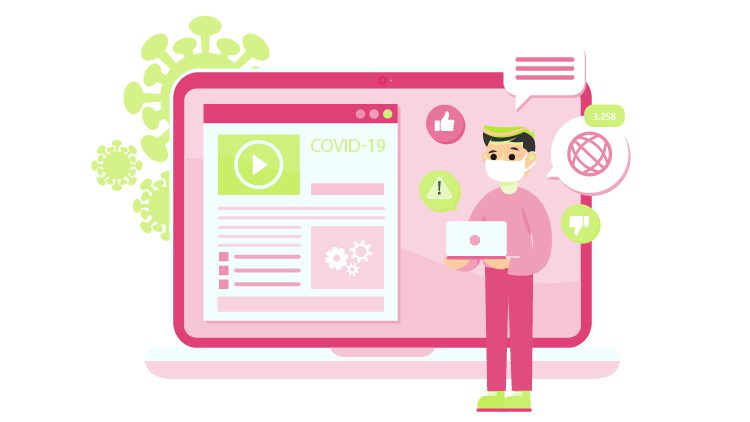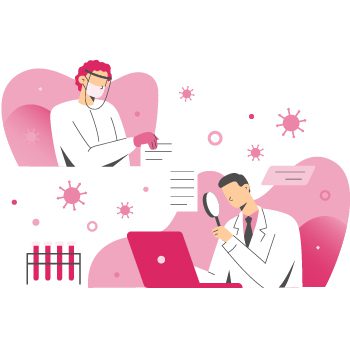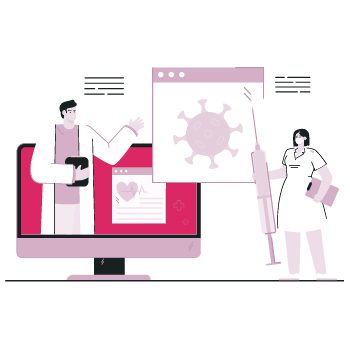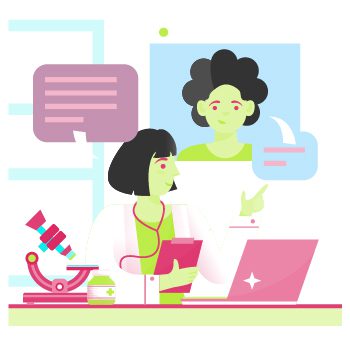
Did medical Translation change after Covid: Must Know
The Importance of Medical Translation
Medical translation is critical in ensuring effective communication between healthcare professionals and patients speaking different languages. Language barriers can impede access to medical care and create a cultural barrier that may lead to misunderstandings. The Coronavirus pandemic has only highlighted the importance of medical translation services as the global crisis has brought the world together to fight the pandemic.
Effective communication between healthcare professionals and patients is critical for proper diagnosis, treatment, and healthcare outcomes. Professional translators, interpreters, and language service providers have become crucial during this Covid-19 outbreak to ensure medical information reaches everyone in a common language, helping ensure patient safety, treatment, and follow-up. In addition, technology has played a role in breaking language barriers through machine translation, allowing for immediate translation of medical information and increased accessibility to remote medical interpretation services. Medical interpretation is essential to promote effective communication between healthcare professionals and patients, ultimately improving health outcomes and healthcare services.


Challenges in Medical Translation During the Pandemic: Everything You Need to Know.
The COVID-19 pandemic posed several challenges to medical translation. With the influx of patients seeking medical attention, healthcare providers had to communicate effectively with individuals whose native language was different from theirs. As a result, medical interpreters had to provide services that involved maintaining physical distance to avoid spreading the virus. Moreover, there was a significant increase in the demand for remote interpretation services due to the limitations of in-person meetings.
The use of foreign languages and medical terminology unfamiliar to many people also challenged medical translation during the pandemic. Accurate and timely translation of medical documents and materials, such as treatment guidelines, vaccine information, and public health announcements, was crucial in helping individuals understand and comply with medical recommendations.
Despite the challenges, the medical translation industry has adapted to the new realities. Collaboration among medical interpreters, translators, and healthcare providers has facilitated the development of new approaches and tools for medical translation. With the advent of telehealth services, medical interpreters and translators have had to improve their technological capabilities to offer remote interpretation and translation services. This development has made medical translation more accessible, efficient, and inclusive, paving the way for a future where medical translation is critical in promoting global health.
Changes in Medical Terminology Related to COVID-19
The COVID-19 pandemic has brought many changes to the medical world, including a significant shift in medical terminology. The terminology related to COVID-19 has had to be created and defined at an unprecedented pace to help healthcare providers communicate about the virus and its impacts.
For example, new terms such as “coronavirus,” “COVID-19,” and “SARS-CoV-2” have emerged and become a part of everyday language, not just in the medical field. The virus has also brought attention to terms such as “quarantine” and “isolation,” which have taken on new significance. Additionally, new symptoms and conditions related to COVID-19 have emerged, leading to new terms such as “COVID toes” and “long COVID.”
The changes in medical terminology related to COVID-19 have made it challenging for medical translators and interpreters. The language about the virus is still evolving, and medical professionals and translators must stay current to ensure accurate communication. The pandemic has also emphasized the importance of precision in medical language, as miscommunication or mistranslation can have severe consequences.
Overall, COVID-19 has significantly changed medical terminology and highlights the importance of staying current with evolving language in the medical field.


Increased Need for Remote Interpretation Services
As the pandemic spread rapidly, it became clear that the demand for medical translation and interpretation services had increased significantly. The urgency to communicate important health information to diverse communities quickly became a matter of life and death.
With social distancing measures in place, the need for remote interpretation services soared. Healthcare providers were forced to find new ways to provide interpretation services that would enable effective communication with their non-English-speaking patients. Remote interpretation services offered a practical solution to this problem.
Remote interpretation services have become essential for telemedicine visits, where medical providers must connect with patients remotely. The demand for remote interpretation services also increased in hospitals, where language barriers hindered effective communication between medical professionals and patients.
To ensure that language barriers did not compromise the health of non-English-speaking communities, healthcare providers collaborated with translation agencies and technology providers to offer reliable and accessible remote interpretation services. This collaborative approach has led to innovations in medical translation, making remote interpretation services more effective and convenient.
The pandemic has underscored the importance of remote interpretation services in medical translation, highlighting the need for accessible, efficient, and effective language services. These changes have undoubtedly transformed the medical translation industry, and the future is bright for the industry post-COVID.
Collaboration and Innovation in the Medical Translation Industry
The COVID-19 pandemic has profoundly impacted the medical translation industry, pushing professionals to collaborate and innovate to meet the increased demand for accurate and timely translations. In the face of the crisis, translators, interpreters, and medical professionals have come together to bridge the language gap and ensure that critical information reaches diverse populations.
One notable collaboration has been between medical translators and healthcare providers. With the influx of patients and the need for multilingual communication, translators have worked closely with doctors and nurses to ensure that medical instructions, treatment plans, and safety protocols are accurately translated and understood. This collaboration has been essential in providing quality care to non-native speakers, who often face language barriers in accessing healthcare services.
Furthermore, the pandemic has also pushed the industry to embrace innovative technologies. Video conferencing and teleconferencing tools have become invaluable resources for remote interpretation services. This has allowed healthcare providers to connect with patients and their families, even when they cannot be physically present. Through these technological advancements, medical translators have been able to provide real-time interpretations, reducing the risk of miscommunication and ensuring that language barriers do not hinder the delivery of vital healthcare information.
The COVID-19 pandemic has forced the medical translation industry to adapt and evolve. Through collaboration and innovation, professionals in the field have been able to rise to the challenges and continue providing vital language support to those in need. Moving forward, it is expected that these collaborations and technological advancements will continue to shape the future of medical translation, enabling more efficient and effective communication in the healthcare setting.
The Future of Medical Translation Post-COVID
The COVID-19 pandemic has certainly changed the landscape of medical translation. The industry had to adapt to new terminologies related to the virus and the sudden need for remote interpretation services. While the pandemic presented significant challenges, it highlighted the importance of efficient and accurate translation services in the medical field.
Moving forward, it is likely that medical translation will continue to rely on technology to improve accuracy and speed. Artificial intelligence and machine learning can help analyze medical terminology and provide faster and more reliable translations. However, this does not mean that human translators will become obsolete. Instead, combining technology and human expertise will result in better and more efficient medical translations.
Moreover, the pandemic has brought to the forefront the need for diversity and cultural sensitivity in medical translation. As healthcare becomes more global, it is vital to consider cultural differences and nuances to ensure accurate translations and provide better care to patients from diverse backgrounds.
Overall, the future of medical translation is promising as the industry adapts to changes brought about by the pandemic and utilizes technological advancements to improve translation services.
Did medical translation change after COVID-19?
COVID-19 has indeed had an impact on medical translation. The pandemic has increased the demand for accurate and timely translation of medical information, research papers, guidelines, and public health materials related to COVID-19.
How has COVID-19 affected the need for medical translation?
The need for medical translation has increased during the COVID-19 pandemic due to the global nature of the virus. Medical information, including research studies, vaccine documentation, and public health guidelines, must be translated to ensure accessibility and understanding across different languages and cultures.
Has the urgency of medical translation increased due to COVID-19?
The speed of medical translation has significantly increased during the COVID-19 pandemic. Rapid dissemination of accurate and up-to-date information related to COVID-19, including symptoms, prevention measures, treatment protocols, and vaccine information, requires quick translation turnaround times.
Are there specific challenges in translating COVID-19-related medical content?
Translating COVID-19-related medical content presents unique challenges, such as keeping up with rapidly evolving terminology, dealing with a high volume of time-sensitive information, and ensuring accurate translation of complex scientific concepts while maintaining clarity and consistency.
Has the demand for remote medical interpreting increased during COVID-19?
The need for remote medical interpreting has increased during the COVID-19 pandemic. With travel restrictions and social distancing measures, healthcare providers have relied more on remote interpreting services to communicate with non-native speakers and provide quality healthcare.

